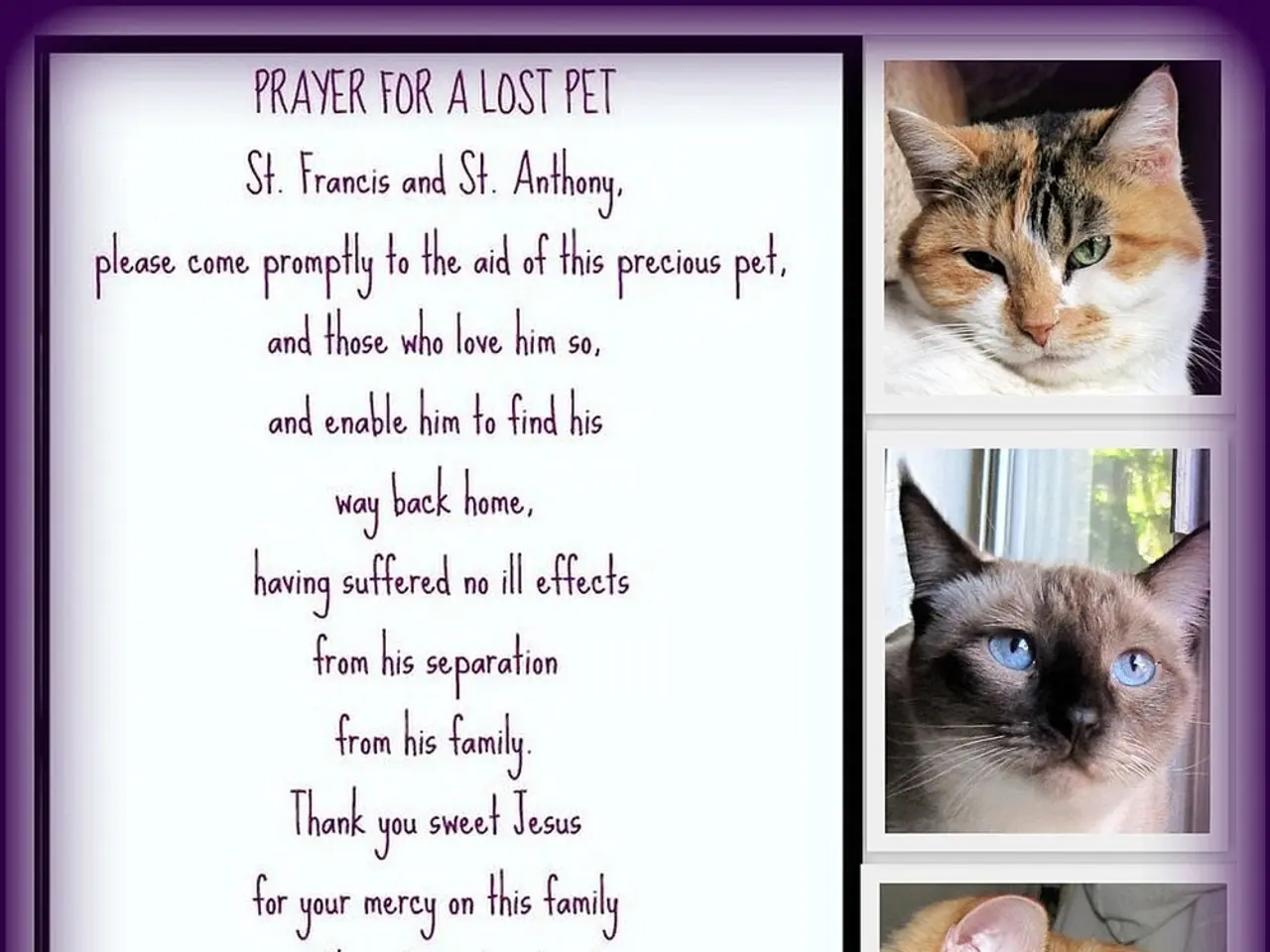Articles - User Expressions - for the 12th of August
In the heart of Hawaiʻi County, a controversial bill aimed at addressing the issue of feeding feral cats on county property has sparked debate among wildlife experts, animal welfare advocates, and the public.
Bill 51: A Divisive Measure
Passed by the County Council in a 6-2 vote, Bill 51 seeks to ban the feeding of feral animals, including cats, on county property. The bill, however, has been met with significant public controversy and debate, with over 1,900 emails of opposition being recorded at one point [3][5].
Impact on Feral Cat Management
Supporters of the bill argue that it will help protect native wildlife and reduce the spread of diseases like toxoplasmosis, which can be transmitted by cats to endemic species such as the Hawaiian goose (nēnē). Feral cat colonies are considered harmful to the environment and native ecosystems [1][4].
Expert Input and Community Solutions
Earlier versions of the bill included amendments that would have allowed "certified" community cat feeders and mandated trap-neuter-release (TNR) programs in collaboration with animal welfare groups. These amendments aimed to manage feral cat populations humanely. However, they were removed after a council executive session, citing possible legal issues with federal and state laws. This removal has drawn criticism for leaving vulnerable feral cats without a caretaker program [1][3].
Opposition Arguments
Opponents and organizations like the Hawaiʻi Department of Land and Natural Resources and the Hawaiʻi Invasive Species Council argue that exemptions for certified feeders and TNR programs perpetuate harm by sustaining feral colonies and confusing enforcement. They advocate for a strict ban with no carve-outs to protect native species and public health [2].
Mayor’s Possible Veto
While the council passed the bill, there is ongoing uncertainty about whether the Mayor of Hawaiʻi County will sign or veto it. No definitive public statement about a veto has yet been reported [3][5].
Alternative Approaches
Critics argue that the bill lacks empathy and ignores the root cause of the feral cat problem, which is largely caused by humans dumping unwanted pets. They propose that workable, enforceable, and empathetic feral cat legislation should include county- and state-supported spay and neuter programs [6].
In a twist of events, Aaron Stene, a member of the County Council, hopes that the Council will override Mayor Kimo Alameda's veto of Bill 59, which, despite its flaws, would have created a path to address the public safety issue of homeless individuals soliciting money [7]. It's important to note that Mayor Alameda did not veto Bill 59 but vetoed Bill 51 [8].
As the situation unfolds, the future of Bill 51 hangs in the balance, with its impact on feral cat management, public health, and native wildlife still a topic of heated discussion.
- The controversy over Bill 51, which aims to ban feeding feral cats on county property, has extended into the realm of politics and policy-and-legislation, as supporters and opponents voice their arguments about the bill's potential impacts on sports (native wildlife) and general-news (public health and feral cat management).
- In the wake of the contentious debate surrounding Bill 51, alternative approaches have emerged, with critics advocating for empathetic legislation that addresses the root cause of the feral cat problem (human abandonment) and includes county- and state-supported spay and neuter programs, thereby engaging the community in a solution.








